Wahoo and Zwift join forces - hands on with new Kickr Core Zwift One indoor trainer
Wahoo and Zwift have put aside their differences to combine the proven Kickr Core platform with the Hub One’s compatibility-boosting single-sprocket, virtual-shifting Cog and Click
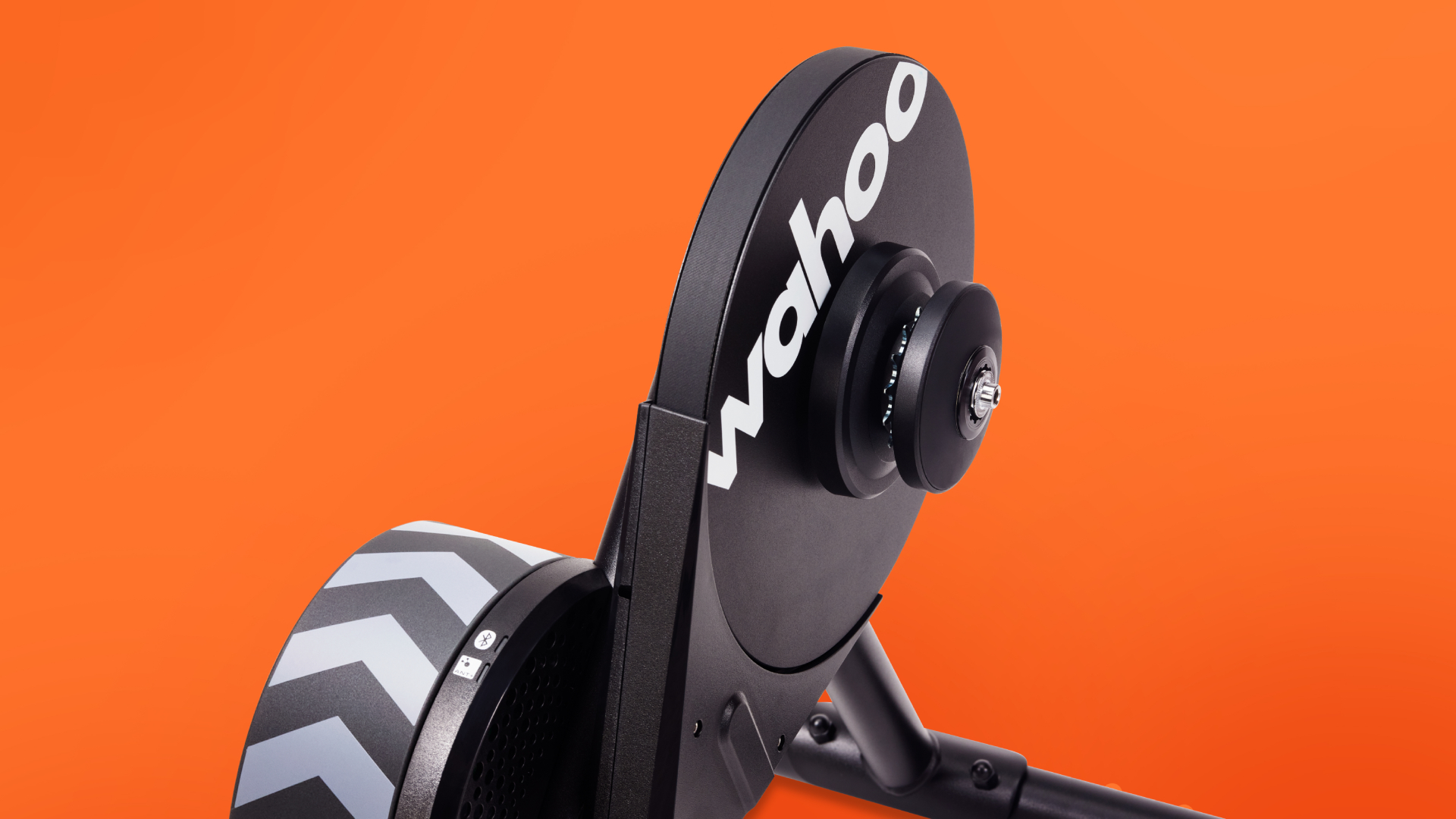

Wahoo and Zwift's relationship appears to have entered a new era, with an exciting new chapter for the indoor training space. Zwift’s innovative Cog and Click tech has now been integrated with the Wahoo Kickr Core, making the indoor smart trainer compatible with drivetrains ranging from eight to 12 speeds - all without the hassle of having to swap cassettes.
For a bit a recap of the origins of the story, back in 2022 Wahoo levelled a patent infringement at Zwift, alleging that the Zwift Hub indoor trainer was too similar in design to Wahoo’s Kickr Core indoor trainer. That lawsuit was settled amicably in September of 2023, with both parties agreeing that collaboration was preferable to confrontation.
And the new Kickr Core Zwift One is part of the fruit of that agreement. The name might be a little unwieldy - though it’s nothing if not descriptive. As a portmanteau of the Kickr Core and Hub One indoor trainers, it takes the best bits from each and is a replacement for both models.

Like with the Zwift Hub One, the single sprocket (or ‘Cog’, as Zwift calls it) mounts to a standard Shimano HG11 freehub body - so you could choose to remove the Cog and install a cassette should you wish, using the Kickr Core Zwift One trainer essentially just like the current Kickr Core.
Going the other way (the potentially more interesting way!), Wahoo will be rolling out a firmware update which will make the current Kickr Core compatible with the virtual shifting remote (the ‘Click’). This means that you could simply pop a Cog onto your current Kickr Core indoor trainer and gain all those inter-compatibility benefits that the new Kickr Core Zwift One offers.
Pricing for the Wahoo Kickr Core Zwift One stands at $599/£549/€599 - including one year of Zwift membership - and is available on zwift.com and wahoofitness.com.
First ride review

Starting with the setup, this was all very easy. Simply attach the two legs with the four bolts provided, select the axle adaptors appropriate for your bike and attach the Click shifter to your bars and away you go! (Remember to shift your gears so that the derailleur is inline with the sprocket, and to zero offset the trainer after five minutes or so of riding.)
The latest race content, interviews, features, reviews and expert buying guides, direct to your inbox!
The Click shifter - which what you use to perform the ‘virtual shifts’ and control the resistance - attaches with a pair of silicone O-rings, much like how a quarter-turn mount for your head unit attaches to your bars.
This gives you flexibility for where you choose to put the shifter - on the tops, drops, by the levers etc. But it does add an element of faff if you’re regularly switching between riding outside and inside.
It would be neat if the Click shifter was actually compatible with a quarter-turn mount. Sure, it wouldn’t be in the most ergonomic position for changing gear - but if most of your indoor riding consists of completing sessions in erg mode, then you wouldn’t be touching it much anyway. (When you are in erg mode, the Click shifter is useful for adjusting the targets of the intervals up or down). I asked Zwift if anything like that was in the pipeline, but sadly there's not.
Erg mode
On the topic of erg mode, first thing I did once up and rolling on Zwift was to bring up a training session with lots of short intervals. The Kickr Core Zwift One felt great with the changes in power between the intervals being very smooth: no choppiness and no sudden brick walls of resistance.
The watts which the trainer was sending out to my laptop adjusted very quickly to the power targets of the intervals - which I found suspicious. It didn't really feel like the resistance was actually changing that quickly.
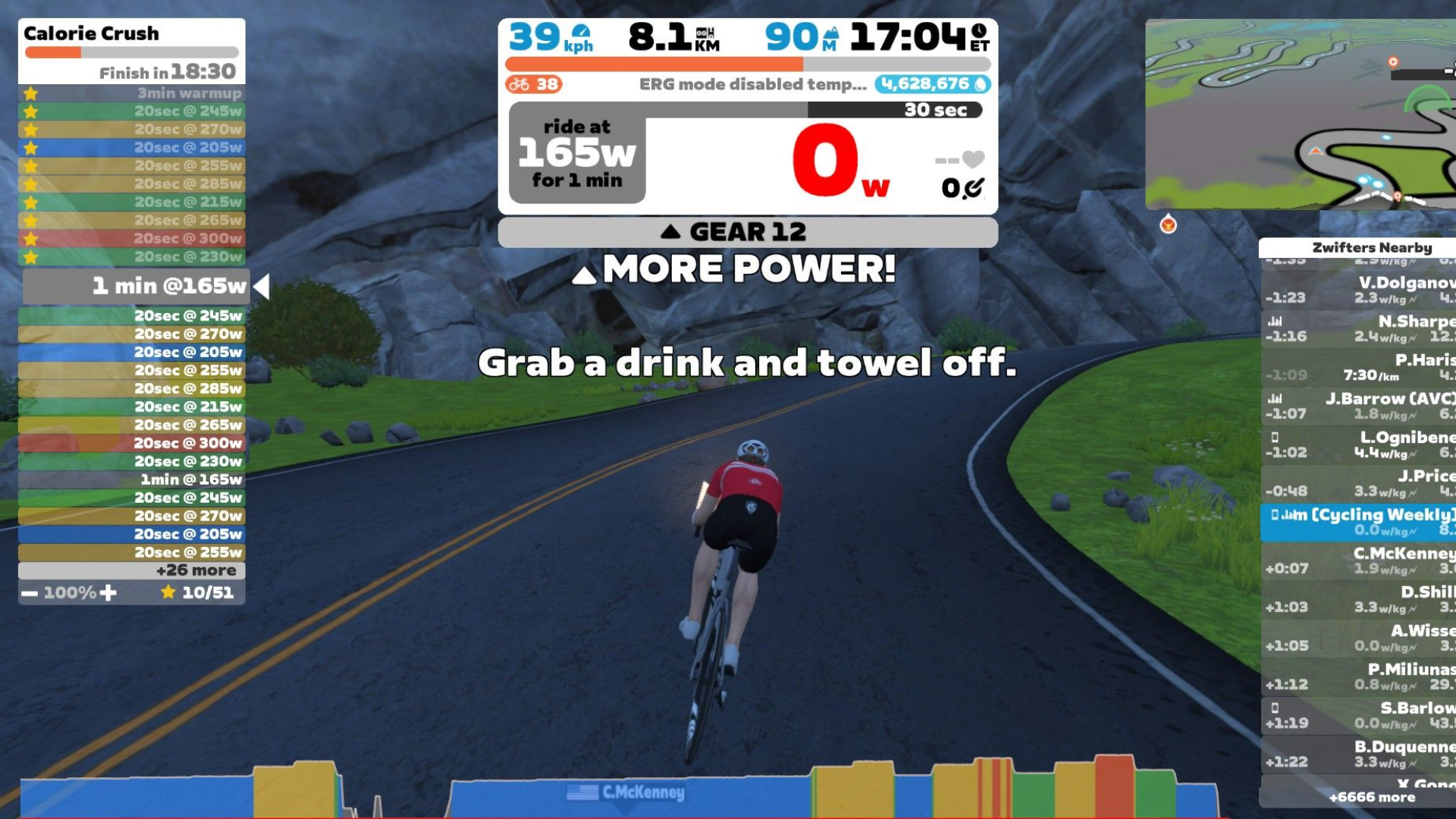
To be sure, I popped on a set of Favero power meter pedals and put it to the test. The power pedals showed it took around seven seconds for the power I was actually putting out to match what the Kickr Core Zwift One said I was putting out - with the result being that my average power for the intervals ended up being a fair bit lower they were supposed to be.

Power profile from free riding (without the erg mode on).
To put some numbers on this, first I needed to find out what the variance between the two power meters naturally was - after all, it is very rare that two power meters actually agree exactly on what power you’re putting out. From the free riding I did without the erg mode on, I found that the Favero pedals generally read about 4% lower than the Kickr Core Zwift One trainer.
This is counter to what you’d expect, as drivetrain losses mean that the power readings at the pedals should be higher than those at the trainer. That said, it’s not uncommon to see discrepancies like this in the real world, even when great care is taken zero offsetting both power meters - that's just how power meters are.
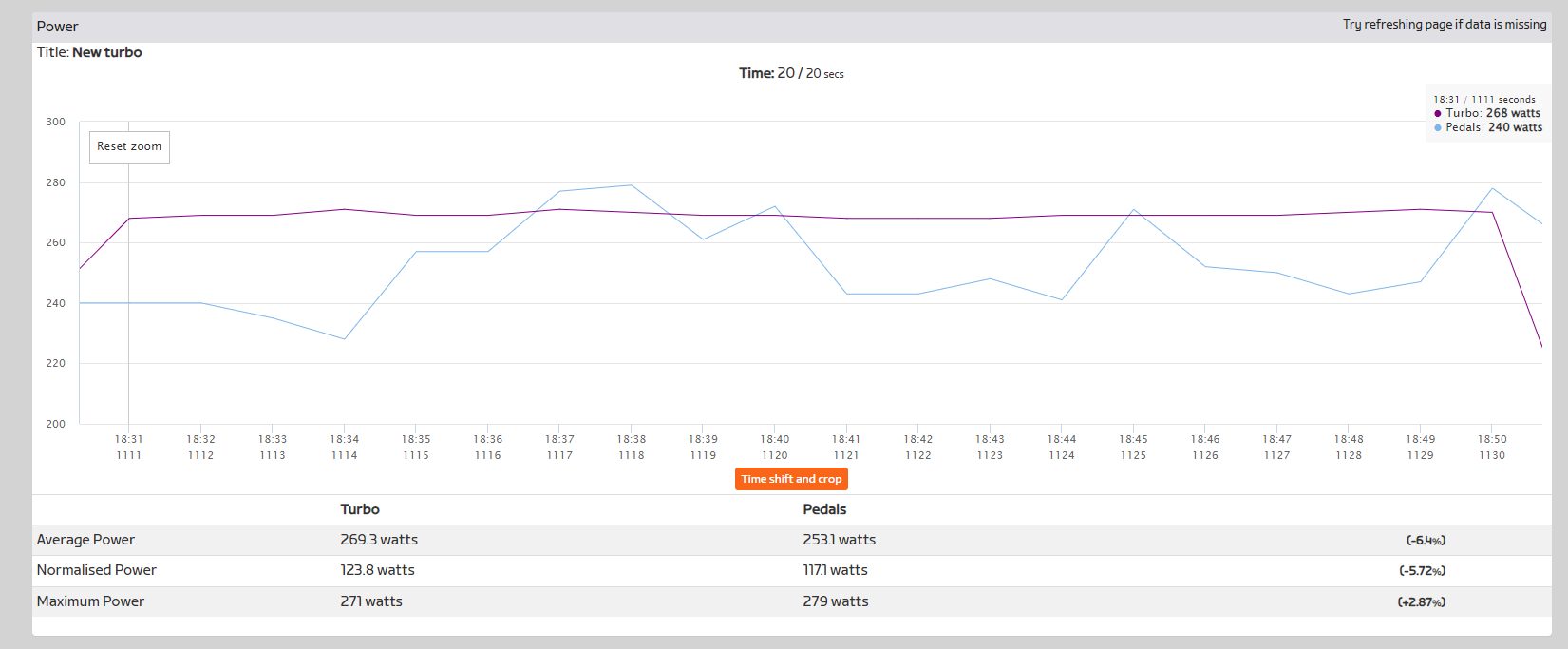
Interval at 270w

Followed immediately by 205w - interesting that the resistance change takes less time when going from higher watts to lower watts
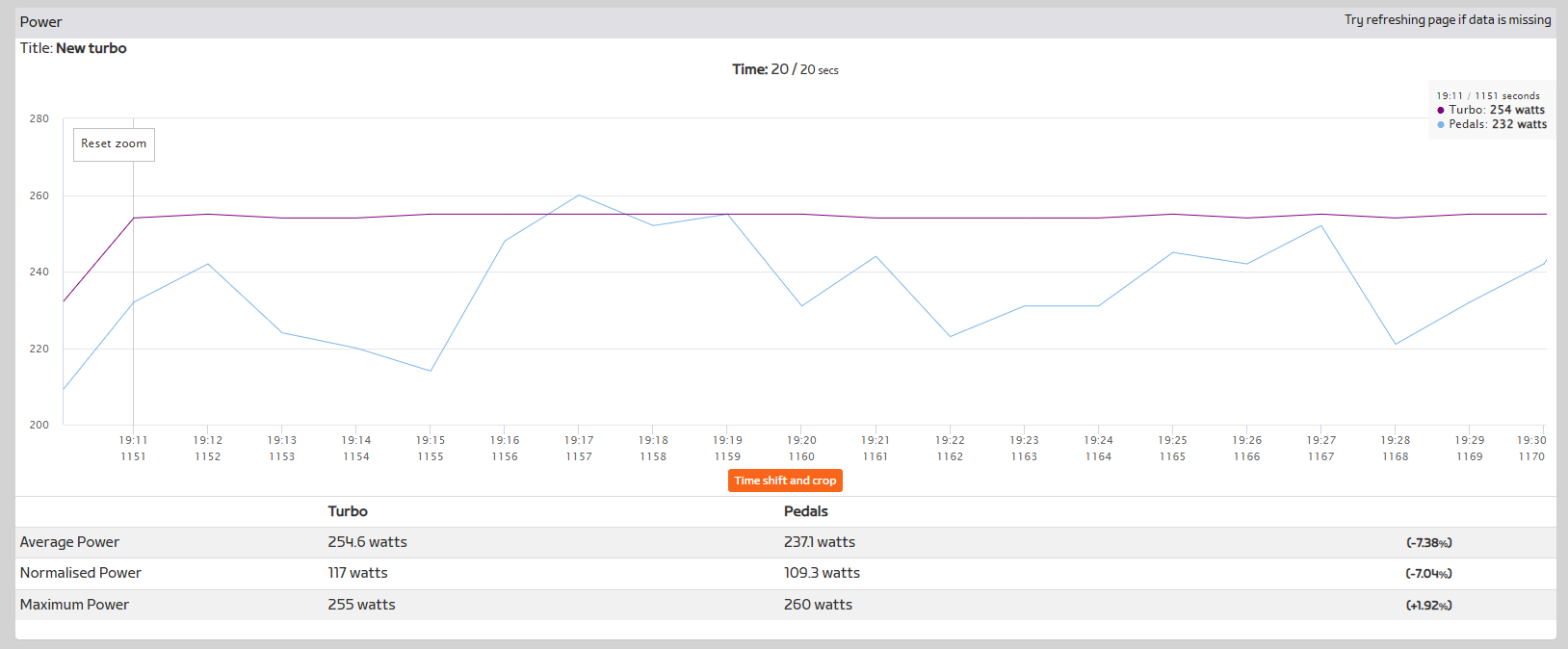
255w interval - similar issues to the 270w interval
In the erg mode intervals, the pedals read about 7% lower than the Kickr Core Zwift One. Knowing that the baseline difference is about 4% means that the difference isn’t as massive as it might appear - but it does still mean you’re not hitting the watts you think you are when doing a session with a lot of resistance changes.
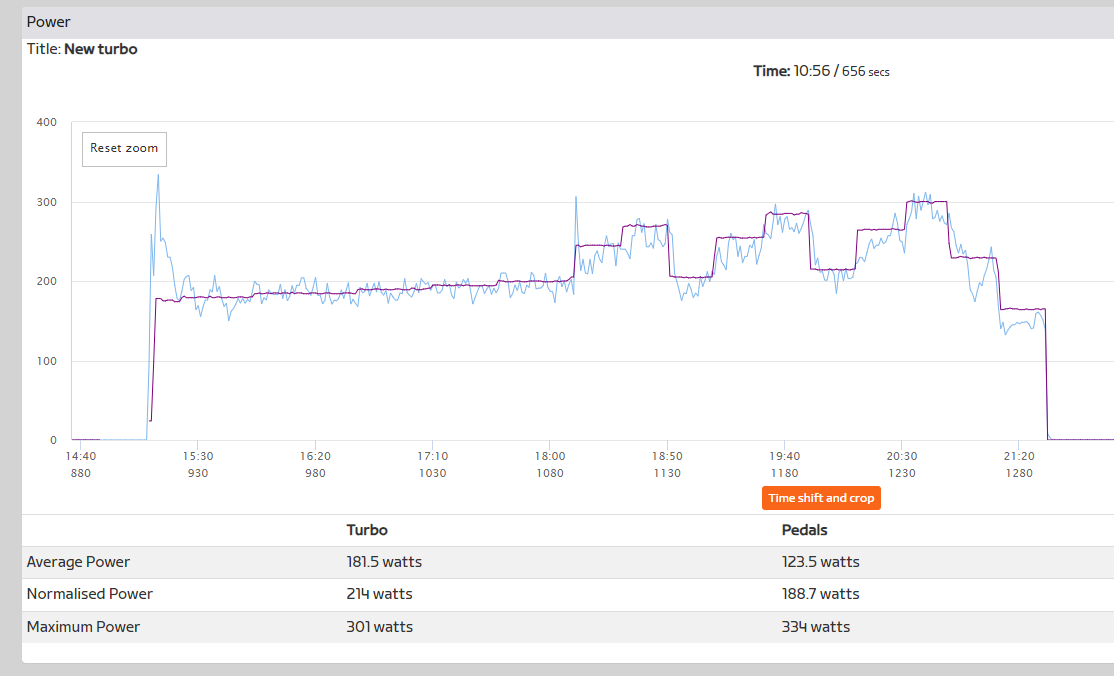
Naturally, this is less of an issue if you are doing longer intervals. Plus, if you care this much about the specifics of your training, you’ll probably be quite happy to swap out the Cog and put a cassette on the trainer instead, for full control over your intervals!
To conclude on the erg mode: I did actually like it. I’d rather have more feathering than hit the intervals like a brick wall, so I was pretty happy with this balance. The pedalling motion was also smooth and fluid - I’ve ridden some which can be quite a struggle to actually keep your cadence up, but no issues here. Still, it’s worth being aware about the speed the resistance/power actually changes for the intervals.
Free riding

To test the mettle of the shifting, I picked the Sand and Sequoias route for the rolling section through the trees. Overall, I thought the shifting was good. Nice and crisp every time - not something I can say is always true for trainers with cassettes.
To go off on a slight tangent, with direct drive trainers, I find that the cassette/freehub can often be a little differently spaced to the cassette of your bike’s wheel. Most of the time I adjust the indexing slightly, but other times when I’m being more lazy, I just put up with the slightly slower shifting and nosier drivetrain.
I have bought super thin cassette spacers in the past which - with a certain degree of faff - allow me to adjust the position of the cassette on either the indoor trainer or wheel (whichever is most inboard) and get it micrometre perfect.
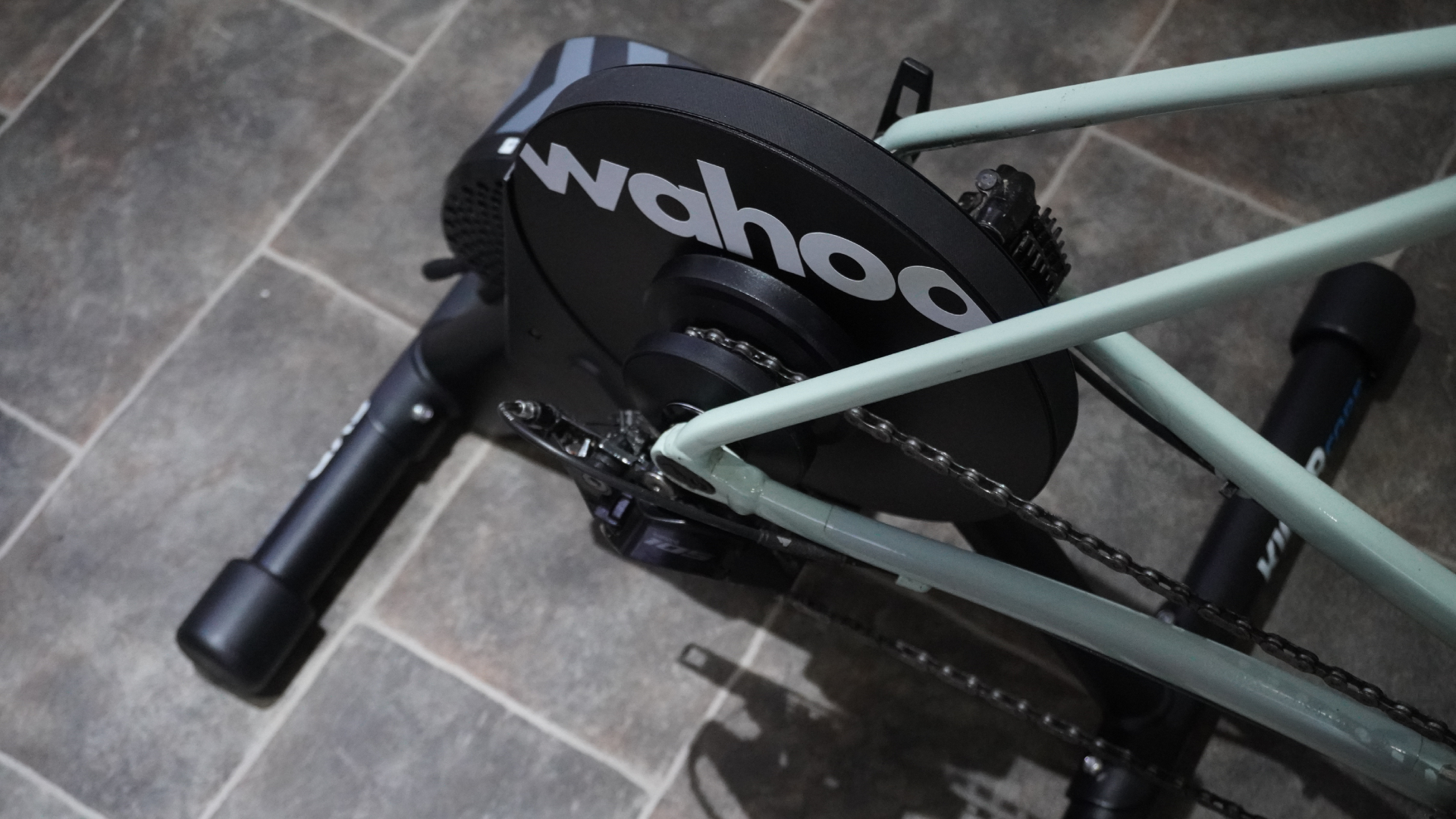
However, once you factor in a second bike with its own wheelset (and another, and another...), that is a lot of spacers and a lot of adjusting! As such, I’ve stopped bothering with the spacers and have resigned myself to adjusting the indexing.
The point pertaining to the Kickr Core Zwift One is a big thumbs up for bringing up the baseline of indoor shifting! The virtual shifting was fast and direct - and no need to even think about touching the rear derailleur.
However… there is a slight ‘wobble’ in terms of the resistance. When you shift into a harder gear, I found it slightly overshoots the resistance before easing up and settling into the set resistance for that gear. It’s not very significant and is sometimes imperceptible, but I know that it would frustrate me in the heat of a Zwift race when I want my shifts to be absolutely dead-on.
I’ve flagged this with Zwift and they are aware of it as a feature/issue (depends on who's describing it). As I mentioned, it’s not a big deal for the vast majority of riding - and for anyone who might be as finickity as me about it, there is always the option of taking off the Cog and just using a standard cassette.
Conclusion
In all, I think that the Cog - and its integration with the Kickr Core - is an excellent development for indoor riding. It does make switching between bikes of different drivetrains so much simpler and eliminates the frustration of mismatched indexing.
The Cog does have its limitations, but you always have the option to take it off and use a standard cassette if you prefer. In most cases, though, I think it’s a really useful feature.
With pricing at $599/£549/€599, it’s the same price as the Kickr Core currently is, which is nice to see.

After winning the 2019 National Single-Speed Cross-Country Mountain Biking Championships and claiming the plushie unicorn (true story), Stefan swapped the flat-bars for drop-bars and has never looked back.
Since then, he’s earnt his 2ⁿᵈ cat racing licence in his first season racing as a third, completed the South Downs Double in under 20 hours and Everested in under 12.
But his favourite rides are multiday bikepacking trips, with all the huge amount of cycling tech and long days spent exploring new roads and trails - as well as histories and cultures. Most recently, he’s spent two weeks riding from Budapest into the mountains of Slovakia.
Height: 177cm
Weight: 67–69kg